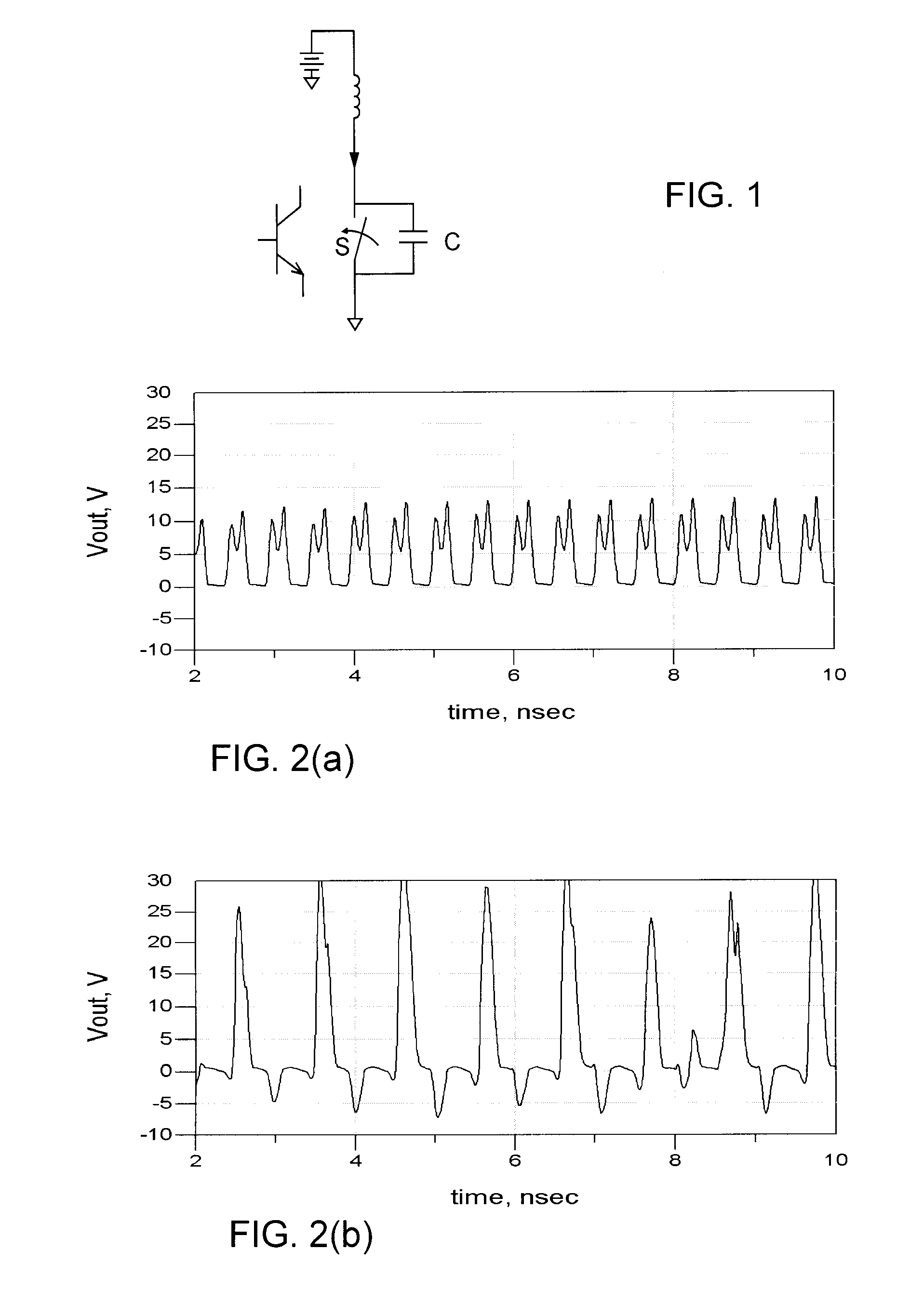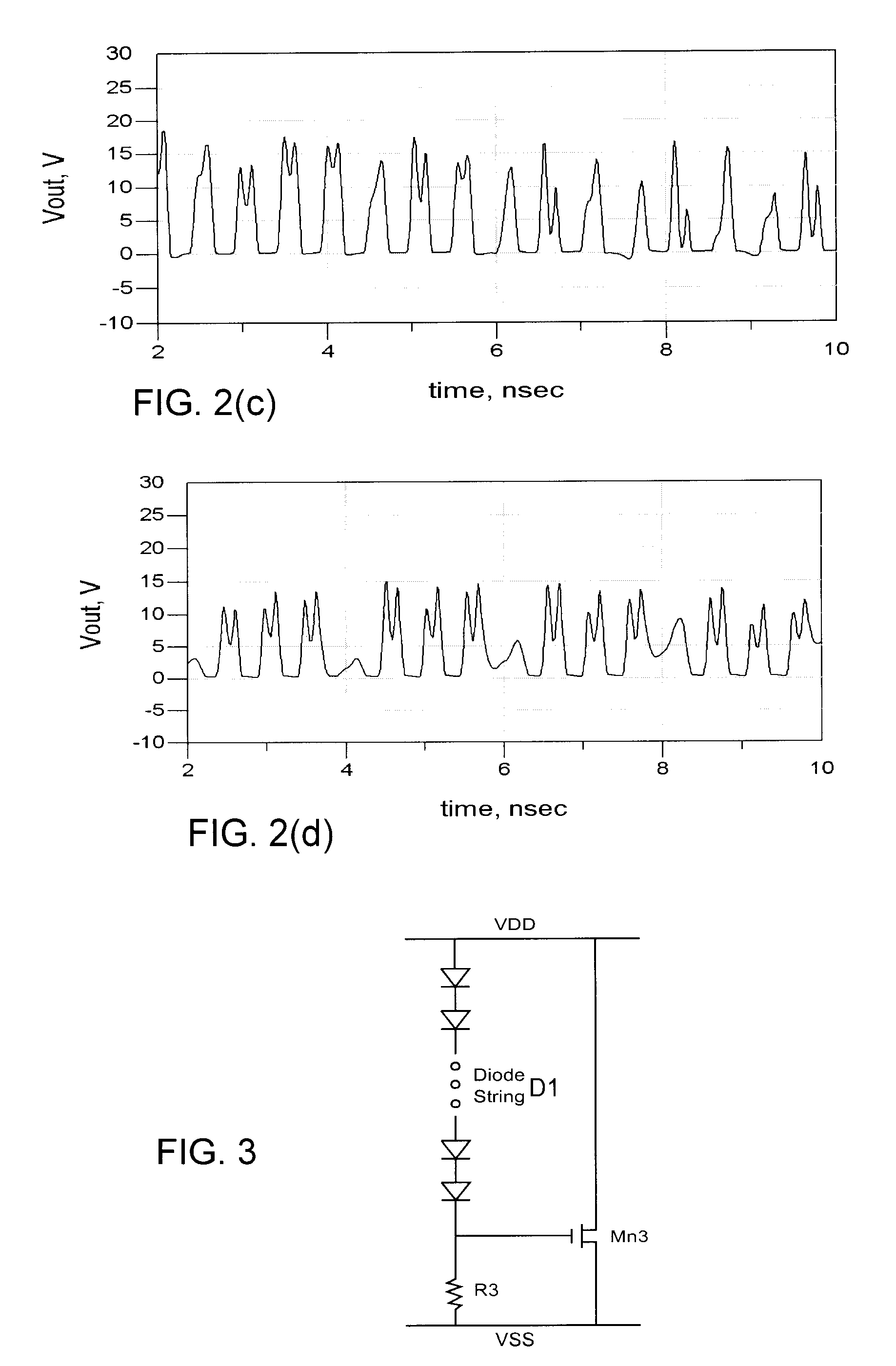ESD unit protection cell for distributed amplifiers
a technology of distributed amplifiers and protection cells, applied in emergency protective circuit arrangements, emergency protective arrangements for limiting excess voltage/current, emergency protective arrangements, etc., can solve problems such as device failure, large voltage waveform, and damage to transistor junctions, and achieve low voltage gain, reduce leakage current, and small size of trigger capacitors
- Summary
- Abstract
- Description
- Claims
- Application Information
AI Technical Summary
Benefits of technology
Problems solved by technology
Method used
Image
Examples
Embodiment Construction
[0044] Each of the additional features and teachings disclosed below may be utilized separately or in conjunction with other features and teachings to provide ESD protection circuits for use as on-chip voltage overload protection circuits for power amplifiers, on-chip ESD protection circuits for RF input pins for integrated circuits such as telecom integrated circuits, and unit protection cells for integration with artificial transmission lines of distributed amplifiers. Representative examples of the present invention, which examples utilize many of these additional features and teachings both separately and in combination, will now be described in further detail with reference to the attached drawings. This detailed description is merely intended to teach a person of skill in the art further details for practicing preferred aspects of the present teachings and is not intended to limit the scope of the invention. Therefore, combinations of features and steps disclosed in the follow...
PUM
 Login to View More
Login to View More Abstract
Description
Claims
Application Information
 Login to View More
Login to View More - R&D
- Intellectual Property
- Life Sciences
- Materials
- Tech Scout
- Unparalleled Data Quality
- Higher Quality Content
- 60% Fewer Hallucinations
Browse by: Latest US Patents, China's latest patents, Technical Efficacy Thesaurus, Application Domain, Technology Topic, Popular Technical Reports.
© 2025 PatSnap. All rights reserved.Legal|Privacy policy|Modern Slavery Act Transparency Statement|Sitemap|About US| Contact US: help@patsnap.com



